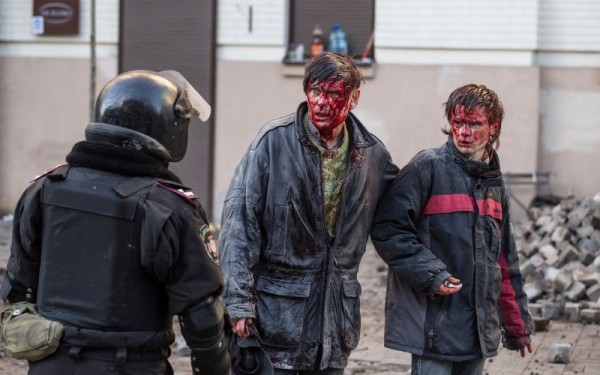TIME: On Tuesday night, police in Ukraine began to storm the protest camp in the center of the capital, Kiev, using water canons, tear gas, truncheons and rubber bullets. In the course of the day, which was the most violent in Ukraine’s post-Soviet history, 20 demonstrators were killed reportedly alongside seven members of the security forces. But the dilemma now facing the state and the police is far more complicated than clearing a city square filled with thousands of people. They also have to dislodge the intricate community of revolutionaries that has taken root there over the past three months. In the space of roughly 10 city blocks, the uprising has established a city within a city, a barricaded fortress with its own police force, its own economy, its own hospitals, a parliament, a cathedral, even a library and, most importantly, its own political ideals. Those cannot be chased away with rubber bullets. The revolutionary fortress, which is known as the Maidan (Ukrainian for city square), also had its own command structure, independent of the political leaders of the revolution who have been trying in vain to negotiate an end to the crisis. One of the three overseers of the Maidan, known as commandants, is Stepan Kubiv, a lawmaker in the national parliament for the pro-Western Fatherland party. On Tuesday, as the government troops surrounded the Maidan and tire fires raged along its perimeter, he got on the stage in the center of the square to explain what was at stake. “Stand up, Ukraine!” Kubiv shouted into the microphone. “Today the fate of our children and grandchildren is decided. The fate of all of us!” Then, in a hint at the bloodshed likely to ensue by morning, he told the armed men guarding what was left of the barricades, “Death to the enemies!” MORE

